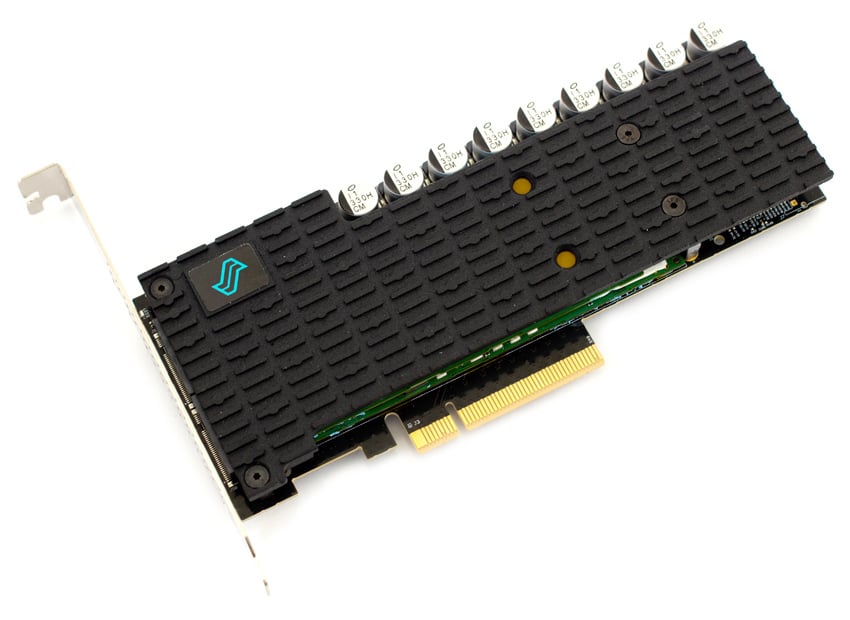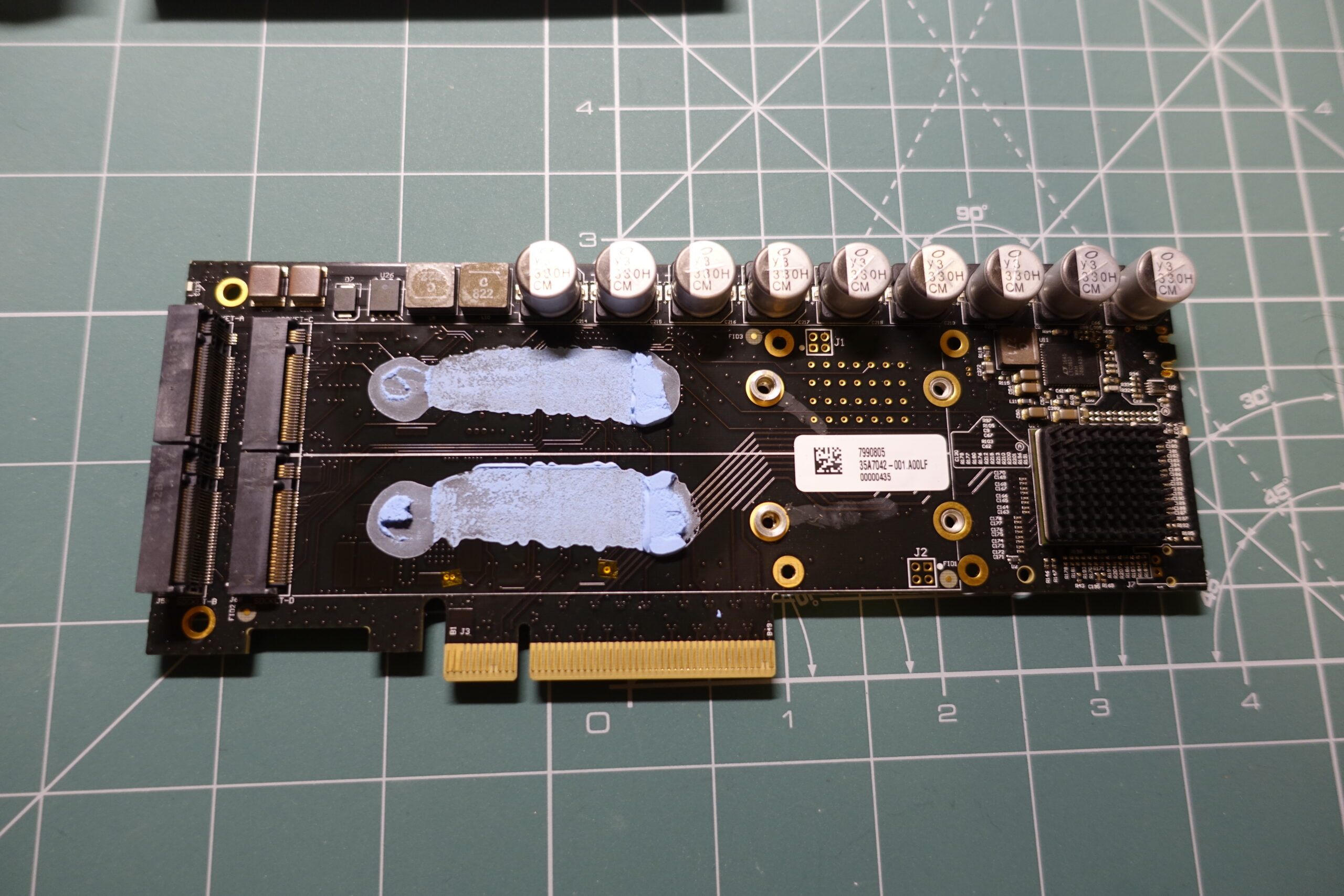This is a teardown and analysis of the Liquid LQD300, which is a HHHL PCIe add-on card. It claims to be an enterprise-grade drive, but is constructed in a way that would make me question that in some ways.

As mentined above, we’re talking about a HHHL card, like a Samsung PM1735 or Intel’s P3/4xxx series drives with an 8-lane connector. But that’s where the similarities end.
What we get on the PCB is a 24-lane PCIe switch and four m.2 slots for 2280 or 22110 drives. These are populated with four 2TB Toshiba XG5 drives with a special firmware that limits their usable capacity to 1.6TB and uses the rest of the NAND as spare area to increase the write endurance of the drive.

The PCIe switch in under the heatsink on the right, interestingly enough, this isn’t coupled to the main heatsink that’s above the SSDs. The m.2 drives are sandwiched together and there are layers of various TIMs between them, as well as some aluminium heatspreaders, so they are in contact with the PCB, as well as each other and the heatsink on top.
So let’s see what we get:
- Enterprise-grade over-provisioning space, as using 2TB of NAND to give 1.6TB of usable capacity is fairly common. This will certainly increase the drive’s longevity and drive the TBW value to levels equal to other enterprise drives.
- The familiar HHHL form factor with a large heatsink.
- A drive that’s essentially four m.2 SSDs glued together and is visible to the host as such.
- All the problems that come with that, such as the need to use some sort of RAID or JBOD array to pool that capacity under a single namespace.
- And the benefits of the very same architecture as well. One can use the four drives as four separate namespaces or pool them together in countrless different ways. One could have multiple namespaces/drives within a single device.
- Some big capacitors for power loss protection.
And what we don’t get:
- Enterprise-grade firmware management and tools. This comes as standard with many drives. Micron generally allows the users to change the size of the over-provisioning area, so one could turn a 1.6TB drive to a 1.92TB drive, which means the endurance will take a hit, but in exchange there will be some added capacity.
- NAND-level redundancy. Most enterprise drives can tolerate NAND failures, as they run a RAID5-like system across the NAND chips. If one fails, the data is still recoverable using the parity information stored on the other chips. Since the Toshiba XG5 is a consumer drive, this isn’t present.
- Full performance without RAID. This should be obvious, but the drives need to be striped in order to maximize throughput and saturate the 8-lane PCIe interface. One drive on its own will only ever be able to saturate 4 lanes.
- NVMe namespaces. Of course, we can create RAID and JBOD disks as we please, but the magic of NVMe namespaces just isn’t supported, which would enable us to make the drive show up as multiple PCIe devices. This can be used in many different ways, but essentially, it presents the drive as a number of different PCIe devices, so that these namespaces coudl be passed to different VMs using PCIe passthrough. It is notable that this is an optional feature and Intel drives generally don’t support it.
So that’s it. My thoughts on why one should or shoudln’t buy these drives. I would personally avoid them, unless they can be had for very cheap. A PM1733/35 would be an actual enterprise drive without all the trickery that is required to make the Liqid drive work. Of course, it may have its own special use cases and one may specifically prefer to have four separate drives.
One use case for this may be using it as a PCIe switch in an SFF build, where it could hold two SSDs and one or two 5 or 10Gb m.2 NICs or perhaps some other m.2-sized expansion cards. That may not allow me to install the heatsink, but the m.2 devices can be secured without it being in place. And this would give me a compact multi-function expansion card for a small ITX or mATX system that may not have enough expansion slots otherwise.
Leave a Reply